Artful Breakdown: The Art of Gesture in Lost Caverns of Ixalan
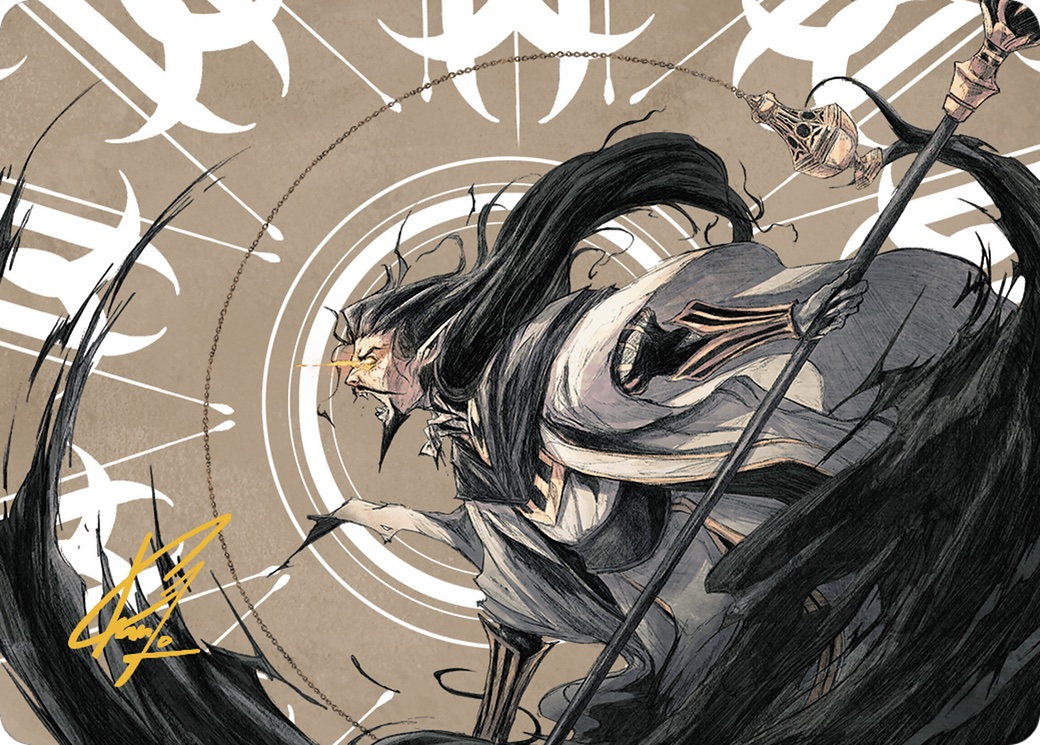
Hello once again, and welcome back to Artful Breakdown, the series that takes a look at the art of Magic: The Gathering cards and the strategies, tricks, techniques, and decisions that go into making it. I'm Aaron, a fantasy illustrator myself, and it's my pleasure to be your guide to looking at the interesting stuff you might miss at card size.
Last time I promised you I'd be talking about something I couldn't believe I hadn't really tackled yet. Before we get to that, though, here's a thought experiment: think back to your favorite pieces of character art in Magic. What's the first thing you noticed about that piece? Beyond that, what's the first thing you notice about a piece of Magic art in general?
For me, one of first things I usually notice is something called the "gesture."
What is Gesture?
Also known as the line of action, gesture is responsible for the flow and direction of the illusion of movement in a piece. It also helps a piece feel fluid rather than static. If you've ever looked at an illustration and you got a sense that the figures felt stiff and more like dolls than people we were just seeing in a still moment, a weak underlying gesture could be one reason.
Artists spend a lot of time working on getting gestures down so we can quickly capture the flow of what we're drawing. For example, below is a small set of sketches from one of my own recent warmup sessions. At a basic glance, these drawings may look like little more than stick figures, but these quick, unfinished studies are the foundations of just about every piece an artist does.

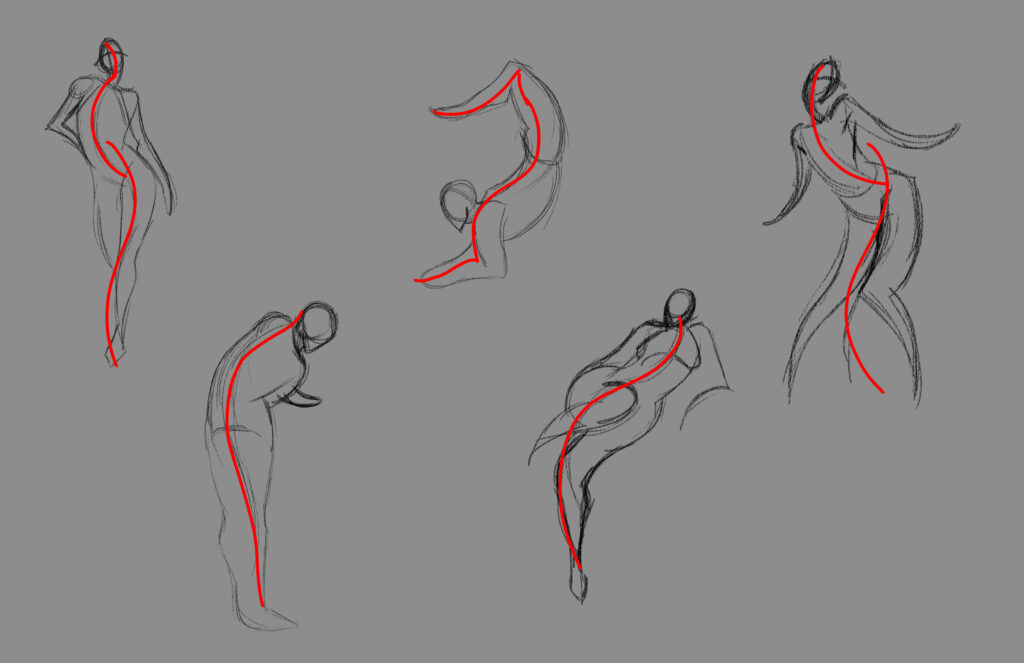
Here you can see the red lines indicate the line of action. Usually it follows the spine, but it can and often does incorporate the legs as additional elements that can inform the gesture as well.
You can do significantly more with gesture than this.
Gesture in Action
Let's take a look at a few cards to see what I'm talking about. I'll take the images and highlight the gestures I'm talking about to demonstrate. I'll start with Clavileño from the Commander product. Honestly it's probably one of my favorite alt arts of the set.
Clavileño, First of the Blessed by Chun Lo
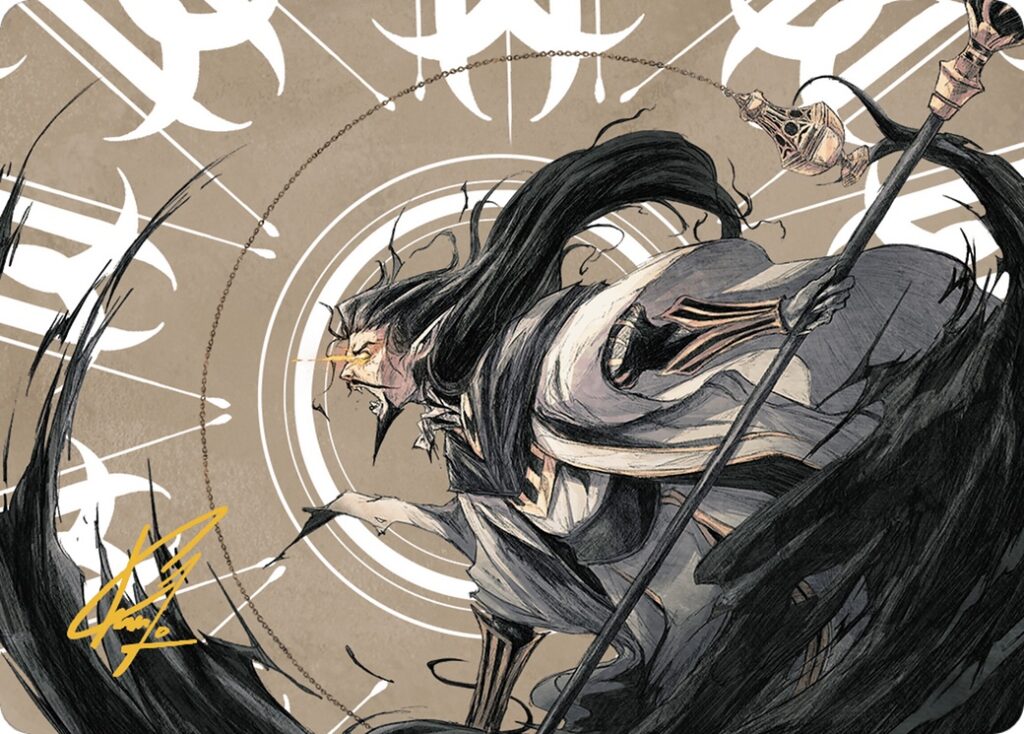
The profile pose is tied in wonderfully with the flowing gesture of the smoky magic, the hair and the frame. It's all very nicely tied together and integrated well.
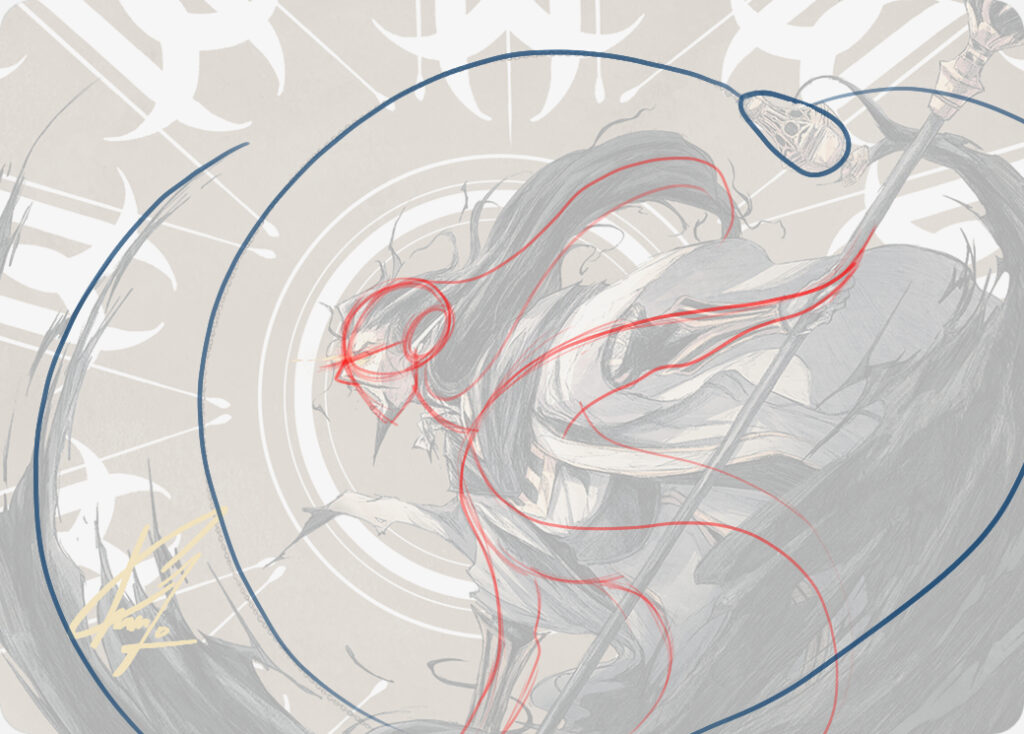
There's also multiple gestures working together. Look how the flowing hair has a different gesture than the smoke, but it's all able to be broken down with simple curves you can make in a single motion.
Amalia Benavides Aguirre by Alix Branwyn and by Alex Negrea

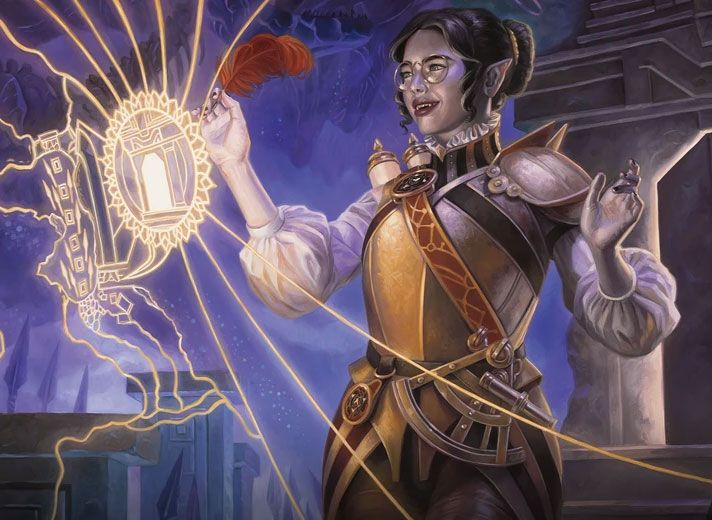
Gesture is even more important in simpler compositions, especially when a piece is character-focused. It also drives the body language and tells us things about the character at a glance, and both of these pieces do that wonderfully.
Since we're already talking about the alternate arts, let's start with Negrea's. This version is a little more confident and self-possessed, and we can see that in the even facial expression, but the body language is also doing work on that front. The tilt of her shoulders and hips are basic, but the gesture keeps her feeling relaxed and comfortable. That being said, we still get a sense of her bookishness with her hands carefully kept in the silhouette of her body.
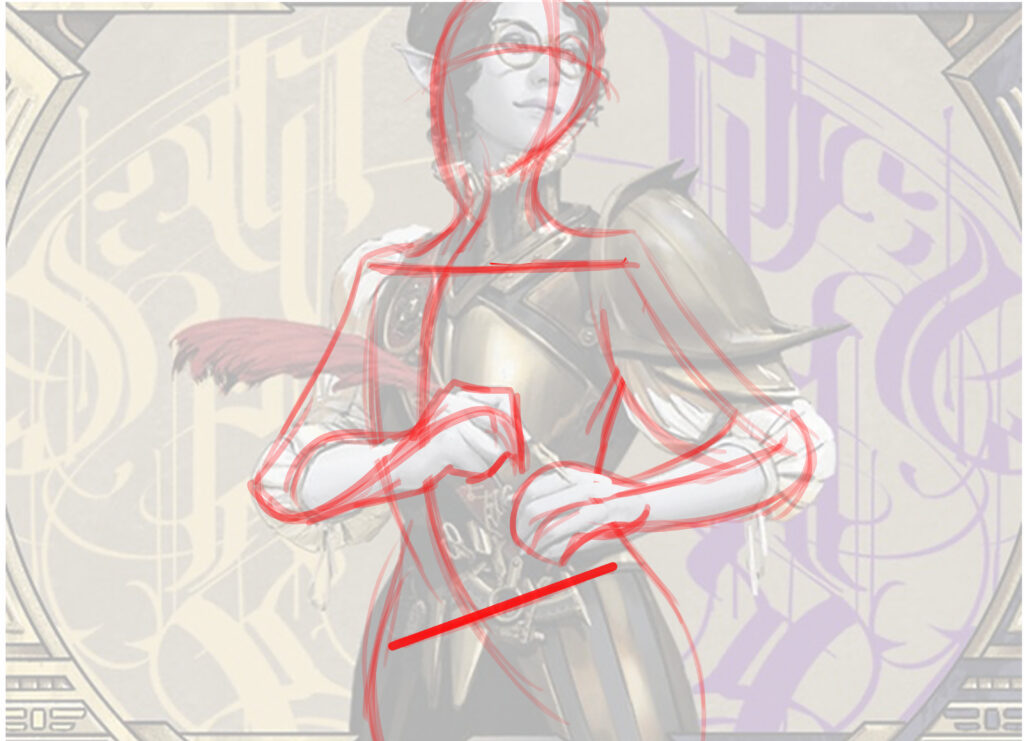
Branwyn's goes in a different direction. The gesture here has her throwing her energy backwards a bit and the body language is more of excited surprise. There's no veneer of scholarly confidence here. It's all youthful (for a vampire) exuberance and energy as we see her map magic at work. The arms are more splayed out and animated, giving that feeling of nerdy joy.

Multiple Gestures
Another trick with gesture is that it can be applied to smaller elements of their pose. There can be a primary line of action, and other parts of the figure can have their own individual ones. A small amount of this happens in Clavileño with his hair, but another great example is Richard Luong's Saheeli, Sun's Brilliance.
Saheeli, Sun's Brilliance by Richard Luong
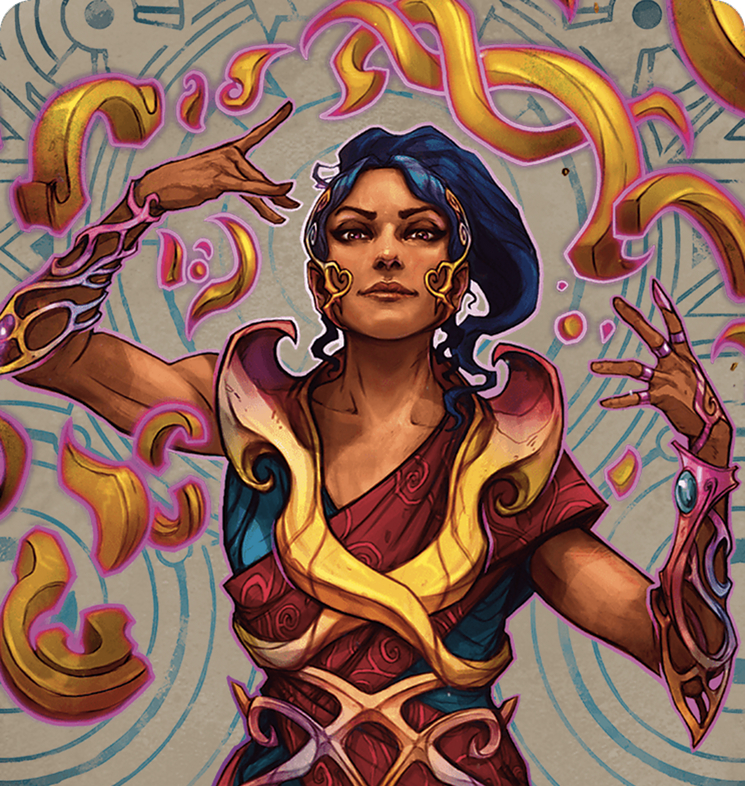
This is functionally just a bust, yet even here, we have movement and some interest created by the tilt of her shoulders and the placement of her arms to help keep our eyes interested.
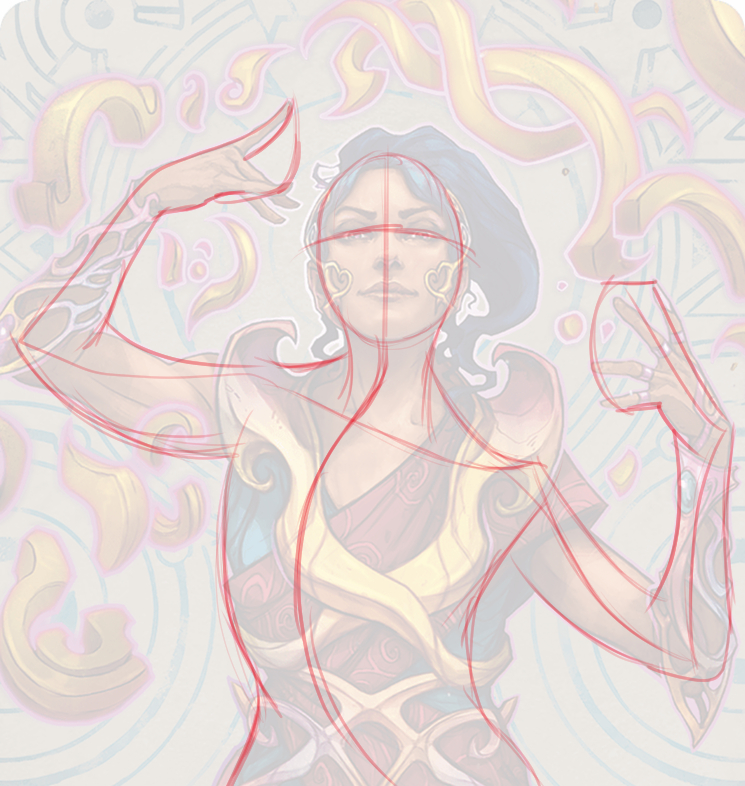
But I want to call attention to something else here. Look at the hands.
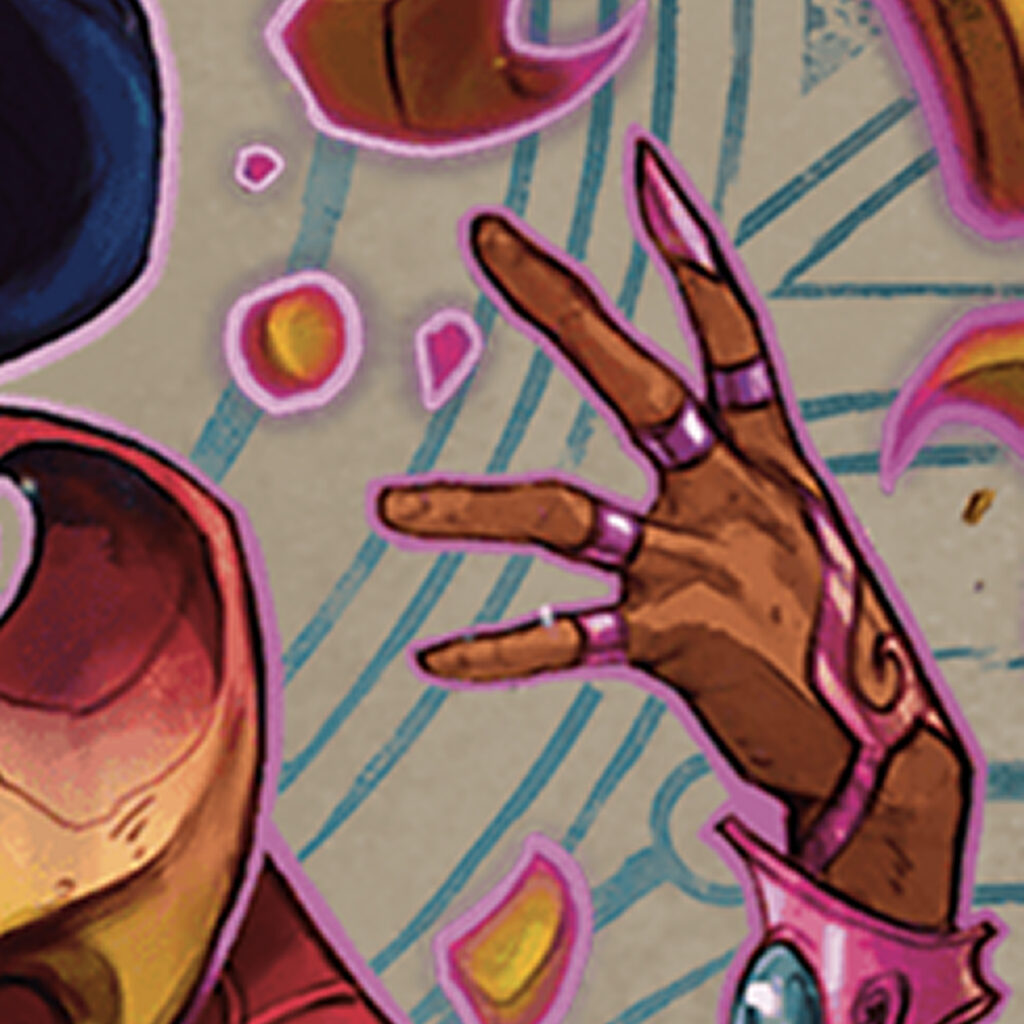
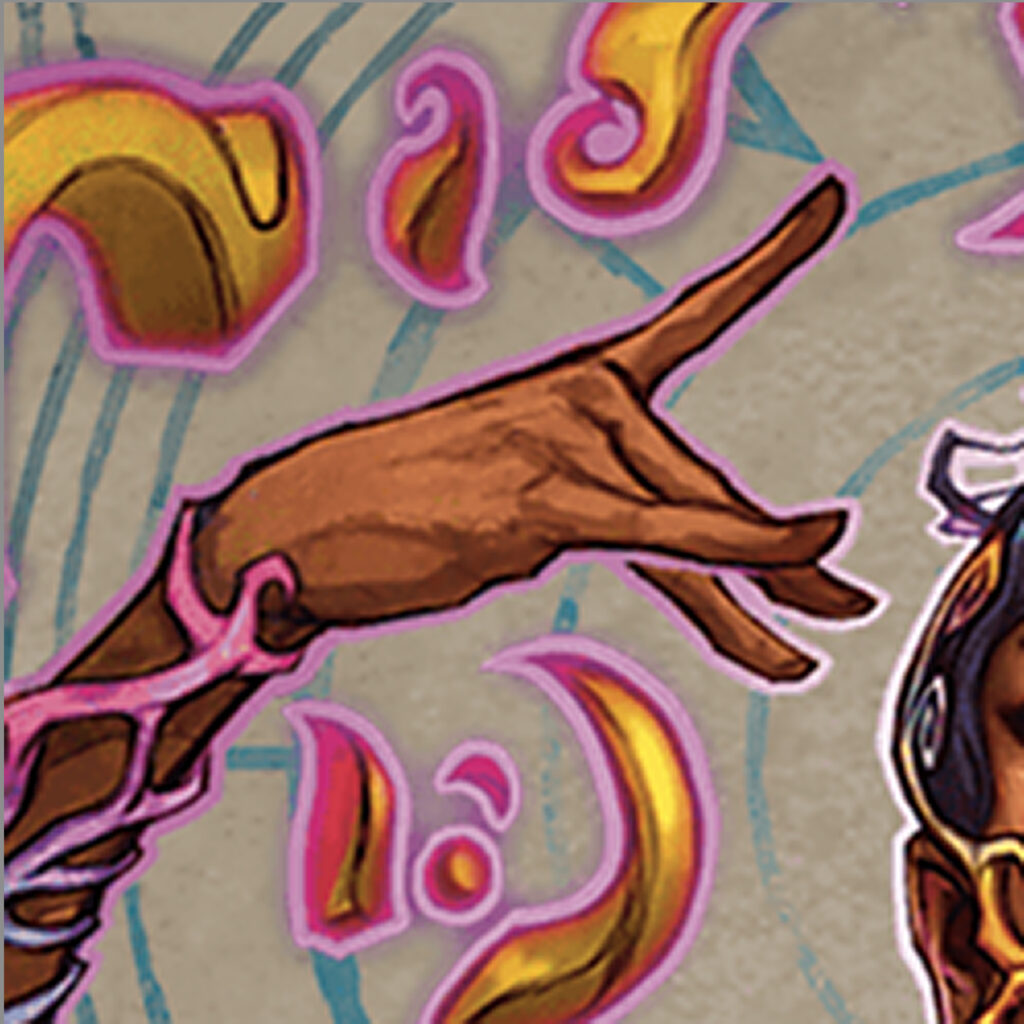
Hands are classically very hard to draw well, and these have a motion, energy, and gesture all their own. Simplified down, you can see their line of action pretty clearly:

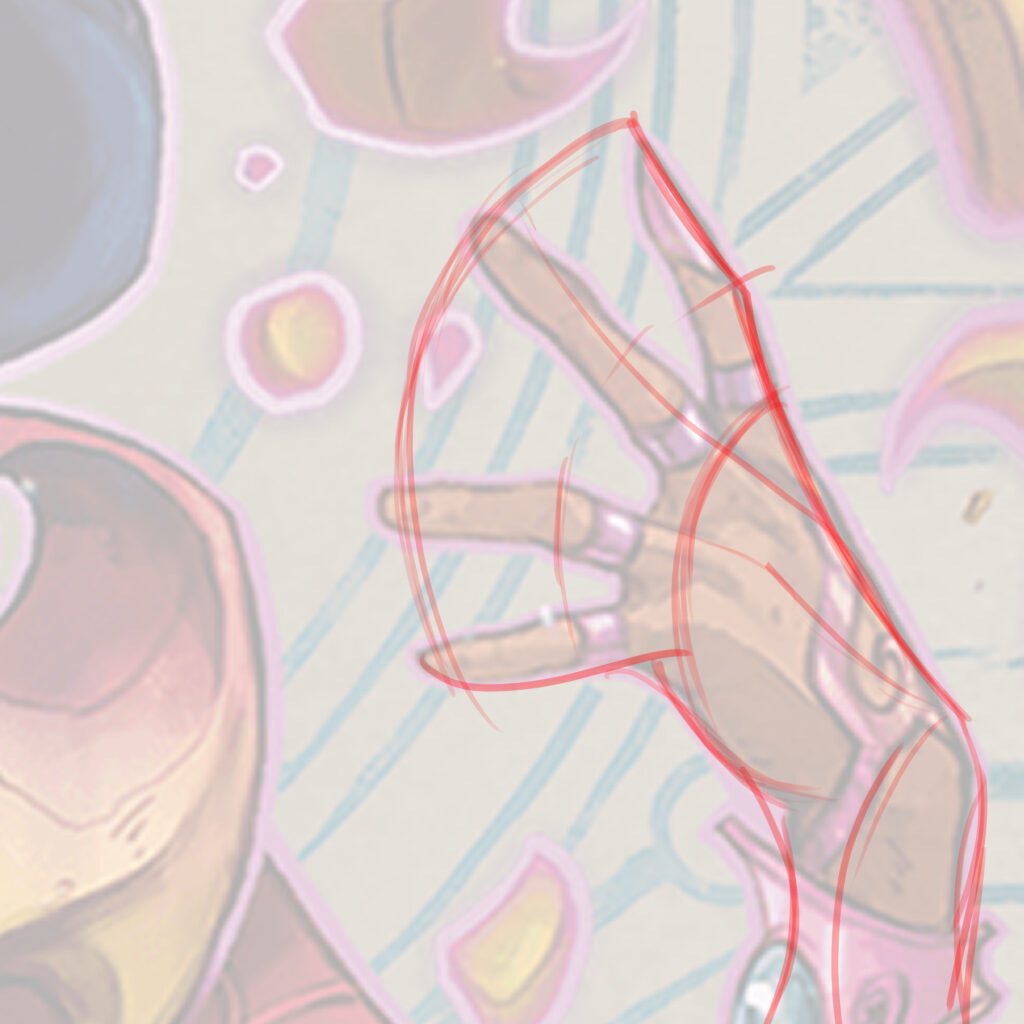
Also, I also noticed something fascinating about this card art. The hand positions are very distinctive. Virtually nobody else makes hand movements like that in the set. They feel rather out of place both in the alternate arts and the main set, which is fitting for Saheeli and it's the kind of small detail I adore getting to call attention to.
Conclusion
Once you start looking for it, you can see gesture applied to pretty much any character piece. It's especially important when you have complicating factors, like a difficult perspective or armor. You can even see it applied in non-character focused work. Well-done gesture adds a strong level of dynamism and interest to an illustration.
Hopefully you found this little tangent into some illustration technique minutiae interesting. If so, please let me know, especially if you've seen any especially interesting or extreme examples yourself. You can let me know here or find me around the internet on places like Twitter or help support me on Patreon. You can also find me on Bluesky. Until then, take care of yourselves, and I'll see you in the next Artful Breakdown.